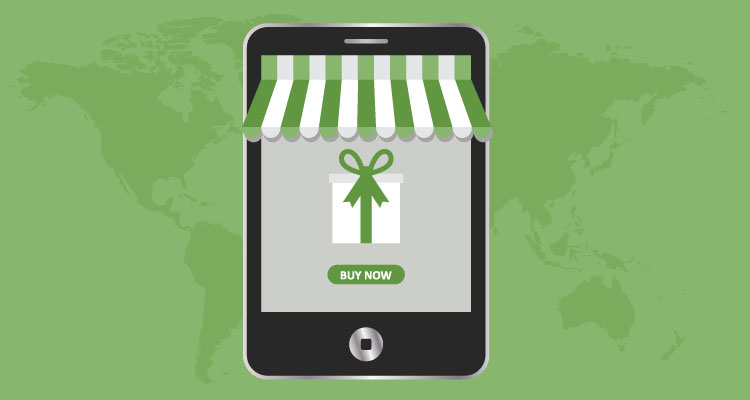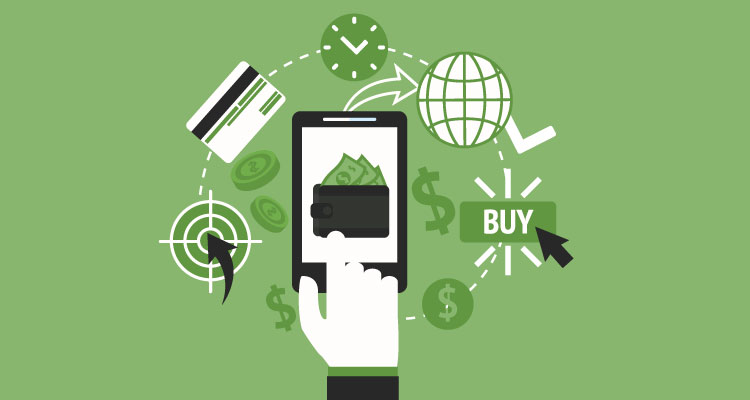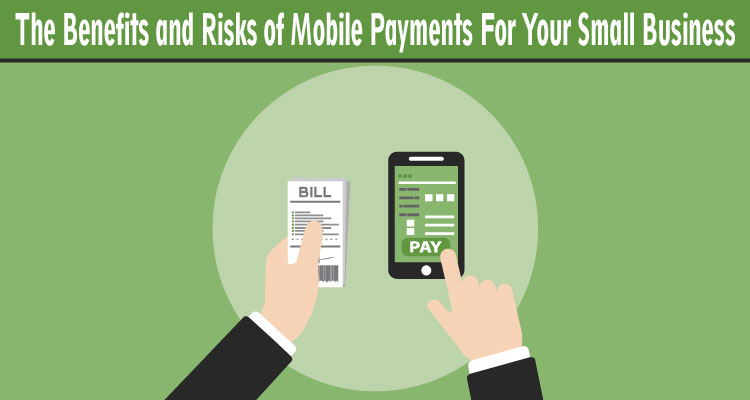Regardless of their industry or size, merchants from all over the world are beginning to embrace mobile payments, thanks to benefits like accepting payments wherever you want and improving the customer experience.
That doesn’t mean that there’s not a downside to mobile payments, particularly security concerns.
Before small business owners start accepting mobile payments, they should take the time to compare the benefits and risks of mobile payments so that they’re certain that mobile payments are the right fit for your business.

Table of Contents
ToggleThe Benefits of Mobile Payments
Customer Convenience
The biggest advantage of accepting mobile payments for small business owners is that it makes it easier for your customers to pay you. Instead of having customers pull out out their credit cards, cash, or write out a check mobile payments support contactless payments via their smartphones.
This not only speeds up the checkout process, it also gives you the chance to engage with your customers throughout the entire customer journey.
For example, using beacons allows you to send customers coupons when they’re in proximity to your store, browse product descriptions while shopping, upsell additional products, and accept payments wherever and whenever the customer prefers.
By making it easier for your customers to make a payment and interact with them, you can increase conversions and turn these customers into loyal brand advocates.
Reduces Expenses
Mobile payments eliminate the need for you to purchase expensive point of sale equipment by simply converting your mobile device by using a card reader or app. It also reduces the cost of paper and ink since you can email or text receipts to your customers instead of printing out paper receipts.
Improves Cash Flow
Mobile payments can increase your cash flow in a couple of ways. For starters, customers prefer to pay with their credit or debit cards over methods like cash. Also, most mobile payment processors transfer funds to a business account in under three days.
However, technology, such as the blockchain, makes transactions occur in real-time.
Integrates Loyalty Programs
Mobile payments makes it possible to integrate loyalty and reward programs since customer information is stored in the app — like being able to send customers a coupon when they’re in proximity to your store.
This means that your customers will automatically receive reward points or coupons for every transaction that they make.
Considering that repeat customers on average spend around 67% more than first-timers, seamlessly integrating loyalty programs can be a major boost to your bottom line.
Access to Actionable Data
Mobile payments can also provide customer data, such as how frequently they shop at your business, how much they spend, and what their preferred payment method is. This information can be used to target your customers based on their shopping behavior, patterns, demands, which improves customer service.
When you improve customer service, you can increase your sales.
Mobile payments also provide additional insights, such as automatically tracking your inventory. Let’s say you operate a food truck. You’ll know when it’s time to order food products so that you don’t run out.

The Risks of Mobile Payments
Watch Security
With the amount of high-profile data breaches, it’s understandable why security is a top concern among both business owners and customers.
Mobile payments are secure for the most, thanks to tokenization and biometrics, it’s been found almost half of all of them are not secure.
Outdated Technology and Infrastructure
While mobile payments are less expensive than traditional POS systems, it still requires new hardware. This includes terminals or phones that can support Near Field Communication. You also have to have a strong internet connection and updated infrastructure that make it possible to process mobile payments.
This may not be that big of an issue in developed countries. However, for developing markets this is a challenge for small business owners.
Cross-Platform Solutions
Since there are many mobile devices and operating systems, a one-size fits all payment solution isn’t always available.
While mobile payments share similar qualities, there are slight differences. For example, Apple Pay employs a Secure Element (SE) to protect sensitive information. Android Pay , on the other hand, relies on Host Card Emulation (HCE).
User Adoption is Slow
Despite the fact the customers prefer to use credit or debit cards, most choose to stay comfortable when making payments. So, even though it’s the same, customers are more comfortable inserting cards rather than waving their phone over it.
Difficult to Read Terms and Conditions
Like any other agreement you would sign, business owners must first read and understand the terms and conditions.
For example, processors like Square, will charge a 2.75 percent swipe fee for transactions. However, they’ll charge 3.5 percent plus $0.15 for each manually entered transaction. If you don’t read the fine print, mainly when it comes to processing fees, you’ll notice an unwelcome surprise when open your invoice at the end of the month.















